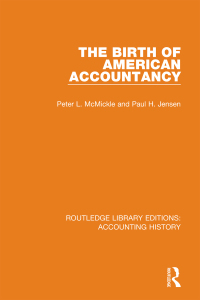
Goal: To practice recording contingent liabilities and reporting them in the financial statements. (See Topic Guides LE 6, 7, 8). Information: At the beginning of Year 2, Terry was informed that a new city ordinance would require them to restore the woods behind their main factory if they intend to keep using it. The estimated cost of the restoration will be approximately $790,000 and must be done within the next 5 years or the factory will be shut down. At the time, Terry's board decided to wait until the beginning of Year 6 to start the restoration. Although the notice was received and the board's decision made at the beginning of the year, no journal entries have yet been made for this obligation. The factory was built 3 years ago when Terry was still a privately held company and is being depreciated using SL depreciation using the original estimate of a 15 year useful life. The depreciation for the building has already been recorded for Year 2. The restoration will not change the factory's salvage value. Terry's management would like to know the effect of the sale on the following ratios: . Current Ratio ROA Assignment: Calculations 1. Calculate each of the two (2) ratios before you make any adjustments. 2. Make the appropriate journal entries, if any, to account for the new liability (including any necessary changes to income tax expense). In making your entries, assume that Terry's Internal Rate of Return is 5%. 3. Make any necessary changes to the financial statements. 4. Calculate the two (2) ratios after you make any adjustments. Critical Thinking 5. What do you think investors' reaction will be to this new obligation? In other words, based on your changes to the financial statements and the change in the ratios, do you think investors will be happy with this new requirement? Why or why not? 6. Terry's CEO argued that they should wait until they had to actually satisfy the obligation to record it, after all they weren't going to have to actually pay anything until then. What are the possible consequences of this decisions and who is likely to be affected? Acct 330 - Page 9 Goal: To practice recording contingent liabilities and reporting them in the financial statements. (See Topic Guides LE 6, 7, 8). Information: At the beginning of Year 2, Terry was informed that a new city ordinance would require them to restore the woods behind their main factory if they intend to keep using it. The estimated cost of the restoration will be approximately $790,000 and must be done within the next 5 years or the factory will be shut down. At the time, Terry's board decided to wait until the beginning of Year 6 to start the restoration. Although the notice was received and the board's decision made at the beginning of the year, no journal entries have yet been made for this obligation. The factory was built 3 years ago when Terry was still a privately held company and is being depreciated using SL depreciation using the original estimate of a 15 year useful life. The depreciation for the building has already been recorded for Year 2. The restoration will not change the factory's salvage value. Terry's management would like to know the effect of the sale on the following ratios: . Current Ratio ROA Assignment: Calculations 1. Calculate each of the two (2) ratios before you make any adjustments. 2. Make the appropriate journal entries, if any, to account for the new liability (including any necessary changes to income tax expense). In making your entries, assume that Terry's Internal Rate of Return is 5%. 3. Make any necessary changes to the financial statements. 4. Calculate the two (2) ratios after you make any adjustments. Critical Thinking 5. What do you think investors' reaction will be to this new obligation? In other words, based on your changes to the financial statements and the change in the ratios, do you think investors will be happy with this new requirement? Why or why not? 6. Terry's CEO argued that they should wait until they had to actually satisfy the obligation to record it, after all they weren't going to have to actually pay anything until then. What are the possible consequences of this decisions and who is likely to be affected? Acct 330 - Page 9







